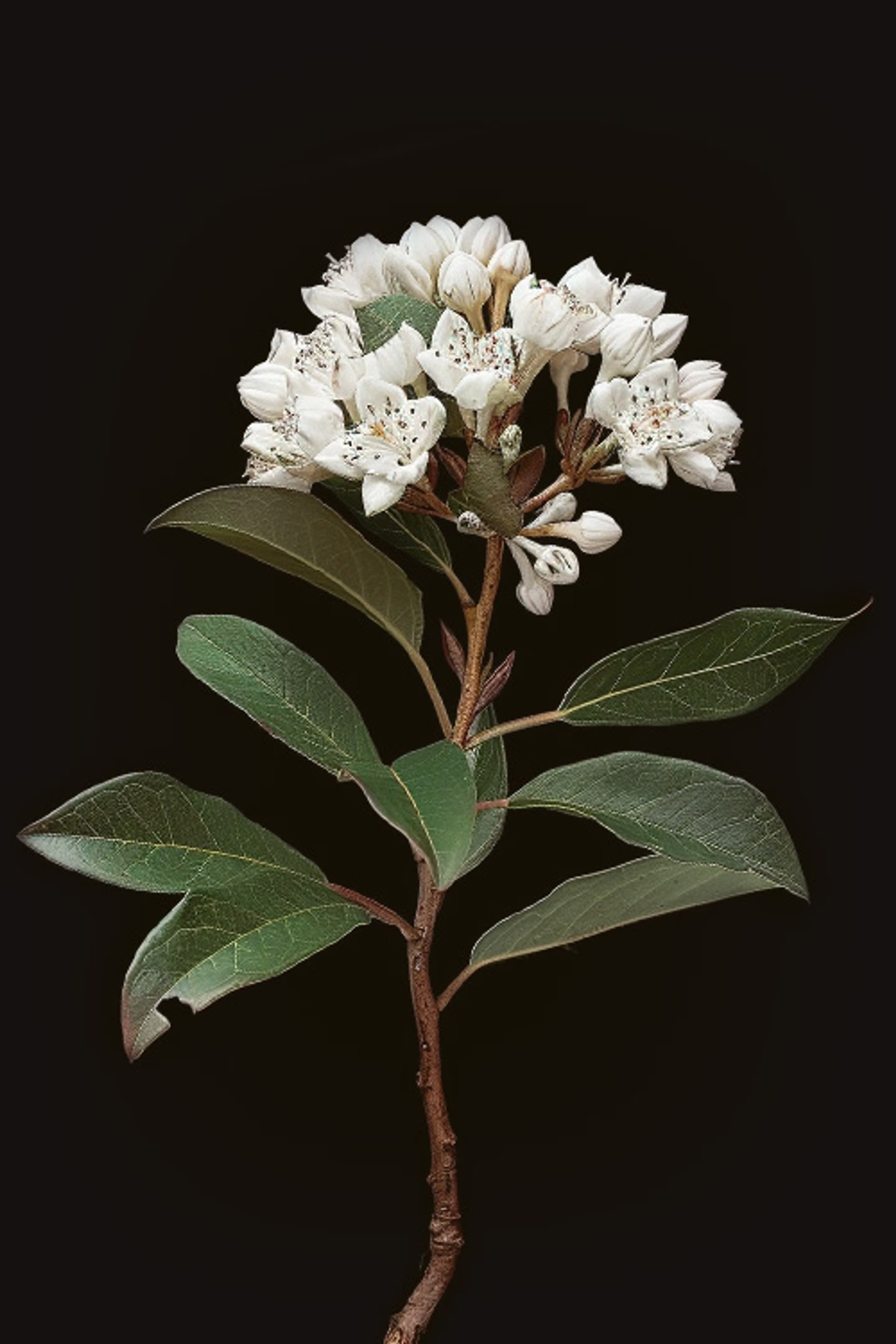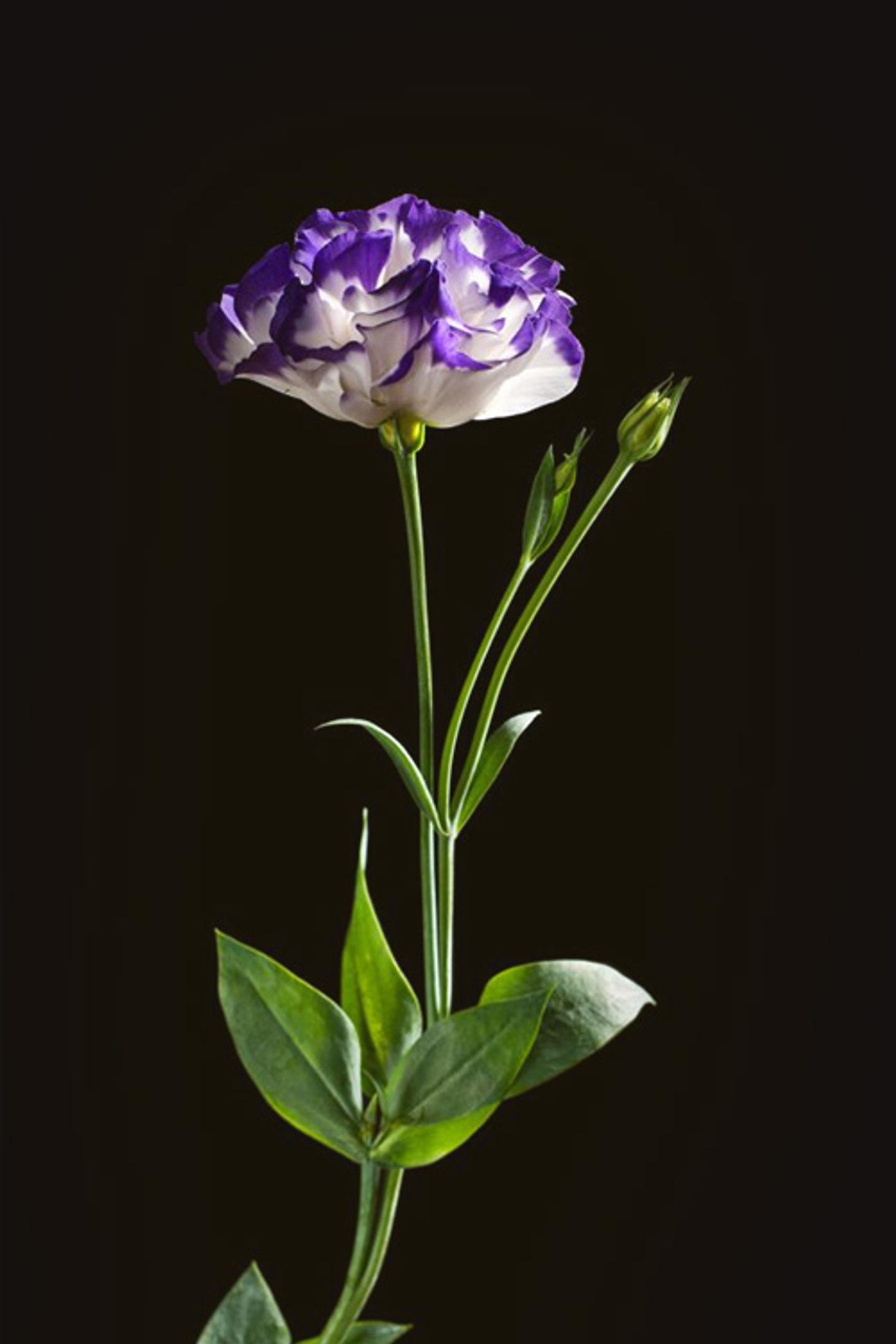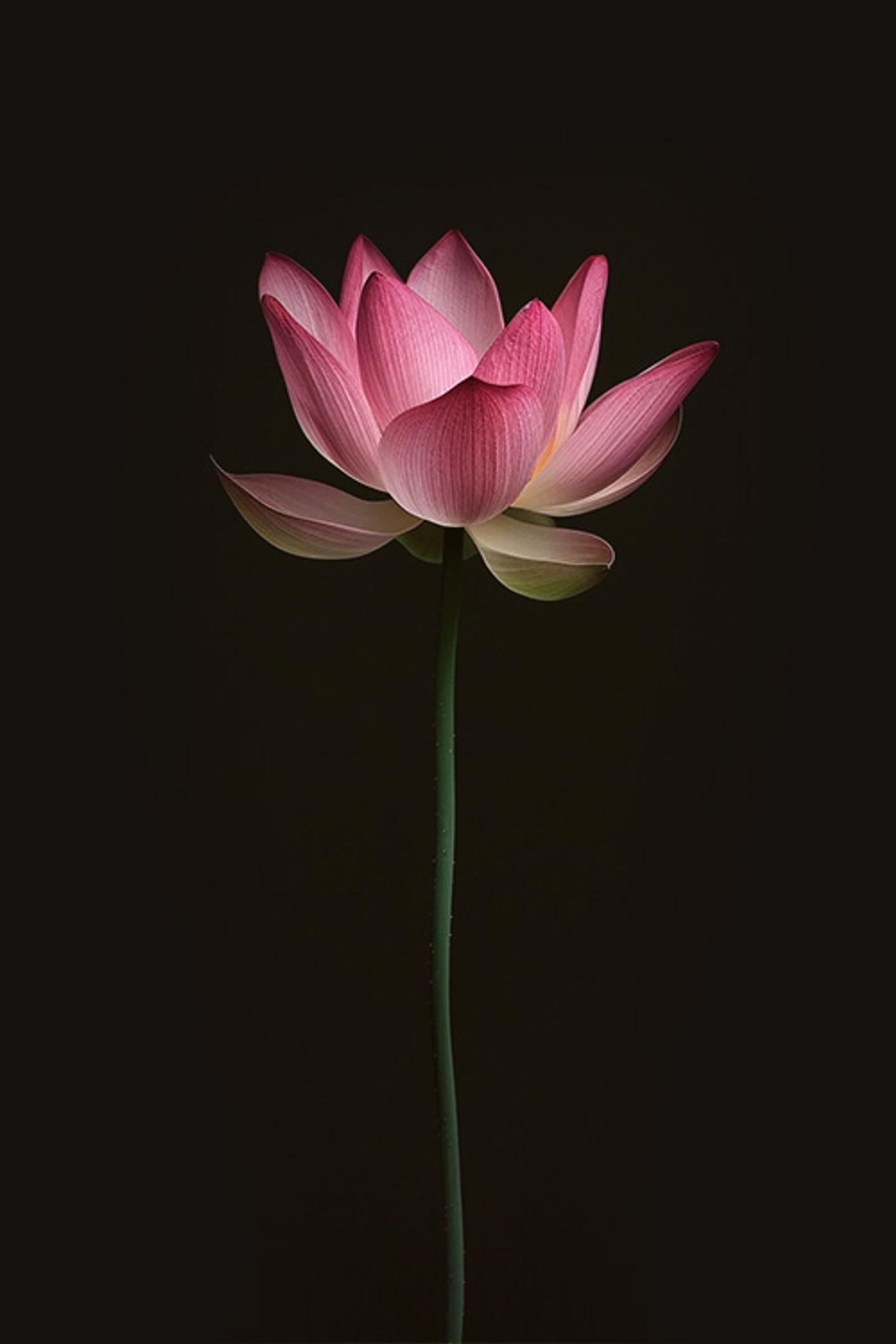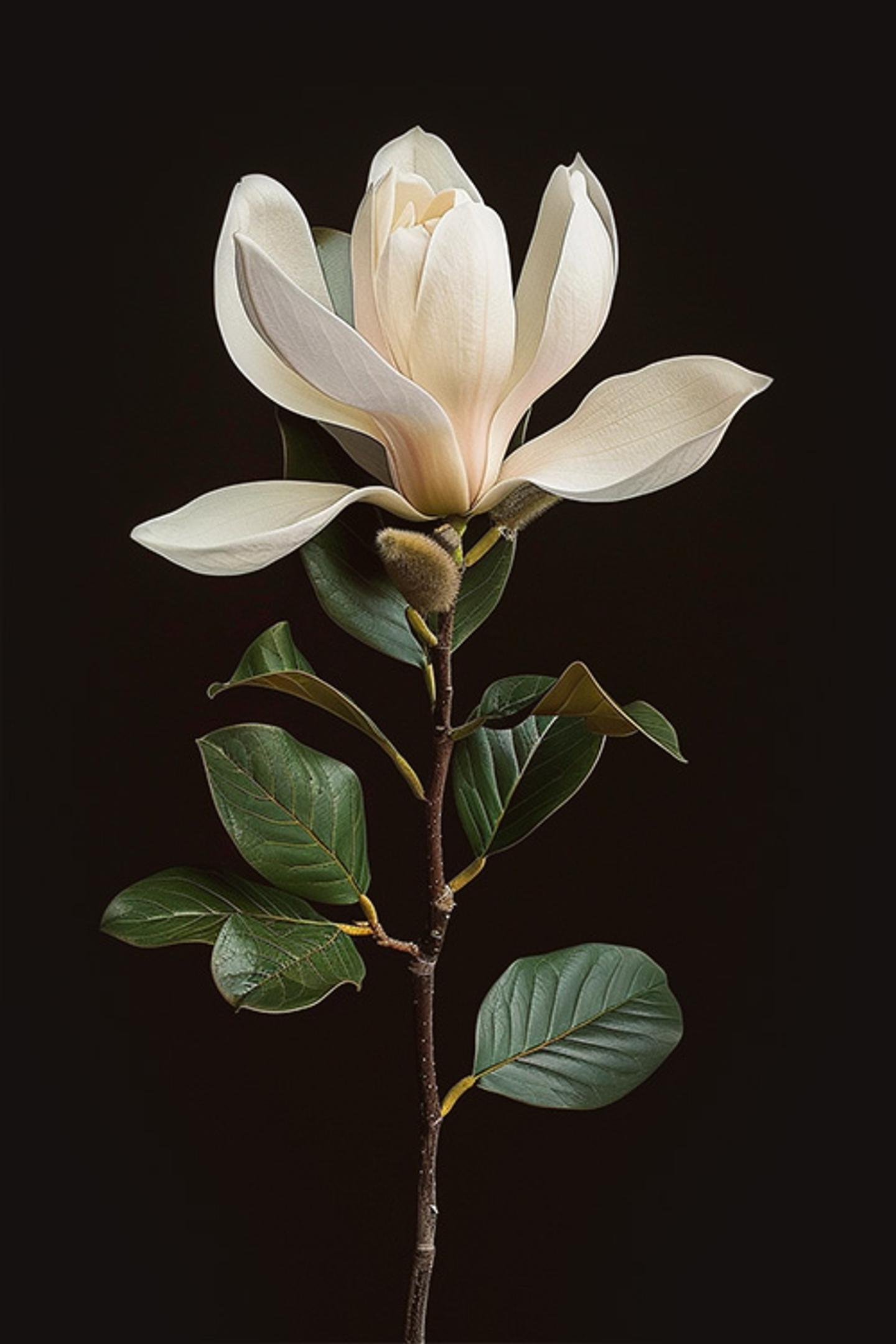Flower Meanings
Mountain Laurel


The Meaning of Mountain Laurel
Alright, Mountain Laurel, what kind of symbolism do you have in store for us?
The genus itself received its name as an honor to a Swedish botanist and naturalist named Pehr Kalm.[1]
Kalm set sail from Sweden to North America to collect information on economically useful plants that could be viable in Scandinavia in 1748. He ended up becoming one of the outstanding utilitarian Linnaean botanists, with one genus (the mountain laurel) and 90 species of plants named after him. However, his biggest legacy was his book, Travels in North America, which stimulated natural history in Sweden and provided Europeans with an accurate and wide-ranging account of North American conditions and customs. [2]
The mountain laurel is said to be a symbol of perseverance, most likely due to its substantial geographical range. From North to South, traveling through Louisiana to Indiana, eastward to Maine, and back down to Florida. You’ll find mountain laurels along mountain roads, but no worries, you don’t need a mountain to grow them.
The mountain laurel, known to be a representation of treachery, are actually extremely poisonous to both humans and animals.
It would seem beauty isn’t always everything, not even for the mountain laurel! The plant will irritate the skin and eyes if touched, and can also cause nausea and vomiting in some people. [3]
The mountain laurel is also associated with ambition. The Greeks would present a wreath of laurel to poets, athletes, and war heroes as a mark of great achievement. In Greek mythology, specifically the story of Apollo (god of light, medicine, music, art, and archery) and Daphne, Daphne is transformed into a laurel tree as she tries to flee from the lovestruck Apollo. Apollo then takes a branch from the tree, keeping it as a symbol of his love. [4]

"No laurels shall I ever win, No splendid blossoms bear, But gratefully receive and use God’s blessed sun and air; And, blooming where my lot is cast, Grow happy and content, Making some barren spot more fair, For a humble life well spent."
Louisa May Alcott
The History of the Mountain Laurel
So we know the mountain laurel gets its name from Swedish naturalist Peter Kalm who commonly referred to the shrub as the “spoon tree” for its previous use as material for spoons and trowels (tools used for gardening) by the Native Americans. However, it is also the state flower of both Pennsylvania and Connecticut.
Connecticut designated the mountain laurel as its state flower in 1907 and Pennsylvania in 1933. Because of its dense, gnarly thickets, many foresters and lumbermen in Pennsylvania actually curse the shrub with expressions such as “ankle breaker” and “ankle twister.” Governor Gifford Pinchot officially dubbed the mountain laurel as Pennsylvania’s state flower, for it grows in nearly all of the state’s sixty-seven counties.[5]
This shrub also has connections to a certain Thomas Jefferson. When young Jefferson was just 23 years old, he made a note of the laurel that grows abundantly throughout Virginia in his only published book, “Notes on the State of Virginia.” Jefferson listed the plant as an ornamental native called “ivy with us.” The neighboring town of Ivy, Virginia, therefore, honors the shrub. [6]
There are many different species of mountain laurel. The Elf mountain laurel or Kalmia latifolia ‘Elf’ was the first dwarf mountain laurel introduced. It has large pink buds that open to nearly white flowers and grows 3 feet tall and 4 feet wide.
The ‘Minuet’ mountain laurel or Kalmia latifolia ‘Minuet’ is another dwarf variety that has light pink buds and pink flowers with a bold red ring around the flower. It grows 3 feet tall and wide.
The ‘Olympic Fire’ mountain laurel or Kalmia latifolia’ Olympic Fire’ has reddish-pink buds that will open to a deeper pink bloom. This variety grows 10 feet tall and wide.
The ‘Peppermint’ mountain laurel or Kalmia latifolia’ Peppermint’ has a rare white flower with dark red streaks coursing through the bloom to its edges. This variety, too, grows 10 feet tall and wide.
DID YOU KNOW - Mountain Laurel Fun Fact
Mountain laurels were first discovered in America in 1624.

How to Grow Mountain Laurel
These shade lovers produce lovely clusters of pink or white flowers with stunning purple markings throughout the blooms. The plant itself is relatively easy to grow in most climates, particularly throughout North America. While they can be a tad particular about its soil needs, we won’t hold that against them. Mountain laurel is overall a great, beautiful blooming shrub, perfect for mass plantings in a shady spot in your garden or foundation plantings.
You can plant your new shrubs from spring (after all danger of frost has safely passed) through summer. Plant them in cool soil that is both moist and well-draining. Also, pay close attention to the pH of the soil; it should be quite acidic. Space the shrubs 4 to 6 feet apart when planting. Mountain laurels prefer partial shade but will also tolerate full sun. Do be sure to avoid excessively windy areas, mainly if you live in the north.
When planting, try not to plant them too deeply and be sure the point where the shrub’s trunk meets its roots is not buried, as this could cause the plant to suffer from rot (which would most likely lead to its death).
While they are still but wee youngins,’ keep the shrubs well-watered, and the soil moist and acidic. Use a layer of wood chips or evergreen bark mulch to keep the soil acidic. Fertilizer or plant food can also help these little shrubs grow in their first stage of life. Use a fertilizer that is formulated specifically for acid-loving shrubs – like rhododendron food.
Once the flowers on your mountain laurel have stopped blooming, remove the clusters immediately. Doing so will help keep your shrub full.
These shrubs do love partial shade; however, try to avoid deep shade, as this can reduce its flowering and cause unsightly leaf spots. If you plan on planting your shrub in full sun, be aware it’s leaves may turn a bit yellowish.
Once you have yourself an established plant, keep the soil moist but not soggy.
You can remove your mountain laurel’s dead or broken branches at any time., but keep the shape pruning to a minimum until springtime, particularly just after blooming has finished. [7]
DID YOU KNOW - Mountain Laurel Fun Fact
The mountain laurel’s leaves are used as disinfectant wash and liniment for treating pain, rheumatism, scratches, inflammation and eliminate body parasites. [9]

How to Care for Mountain Laurel
As the mountain laurel is a shrub, it can be quite tempting to snip off a few stems if you’ve got one growing in your garden. The shrubs usually grow quite dense and rounded, with gnarled branches that make them attractive in all seasons! [7]
The best time for cutting is in the early morning when the branches have given way to freshly opened blooms. Use shard pruners to get a clean, easy cut. Remove the leaves from the lower parts of the branch, about 4-6 inches from the base of the stem. Next, slit the bottom 2 inches of each stem with a knife, then immediately submerge them into warm water for several hours, or overnight. Voilà! Arrange your freshly cut mountain laurels in a vase or container for display! [8]
Be careful to keep them away from any pets you may have wandering about your house and enjoy!
When to Send Mountain Laurel as a Gift
As the state flowers of Pennsylvania and Connecticut, mountain laurels of any variety make the perfect gift for any new resident of the states. They also make the perfect gift for any garden lover or someone starting their first garden as they are easy to care for. Their symbolic relation to perseverance make it the perfect gift for a recent grad or congratulating a milestone or amazing accomplishment!

References:
- 1 - A to Z Flowers
- 2 - Biographi
- 3 - Gazzette
- 4 - Ehow.com
- 5 - Extension
- 6 - Monticello
- 7 - The Spruce
- 8 - Gardening
- 9 - Health Benefits Times
Flower Meanings — keep discovering

Lisianthus
Sometimes the simplest of things can become the most elegant…

Lotus
The Nelumbo nucifera, also known as the sacred lotus, water lily, or just plain old lotus—is considered one of the most sacred blooms in our world’s history.

Magnolia
No, we’re not talking about Steel Magnolias, unfortunately. But we are talking about one of the most iconic trees of the American South!

Marigolds
Marigolds may be the birth month flower of October, but they’re soo much more than just our favorite fall annual!

Lisianthus
Sometimes the simplest of things can become the most elegant…

Lotus
The Nelumbo nucifera, also known as the sacred lotus, water lily, or just plain old lotus—is considered one of the most sacred blooms in our world’s history.

Magnolia
No, we’re not talking about Steel Magnolias, unfortunately. But we are talking about one of the most iconic trees of the American South!

Marigolds
Marigolds may be the birth month flower of October, but they’re soo much more than just our favorite fall annual!
Ready to send beautiful flowers?
Our guided experience helps you send a one-of-a-kind arrangement perfect for every occasion.
Send Flowers